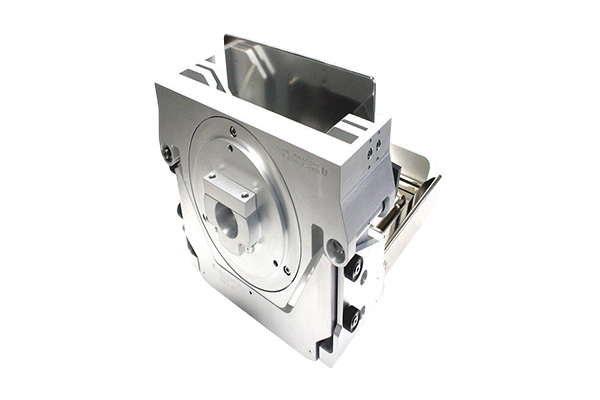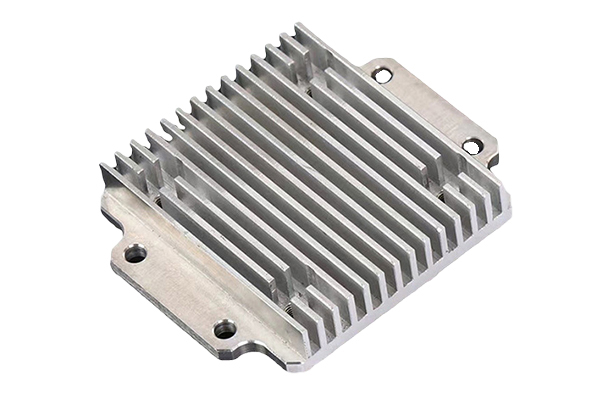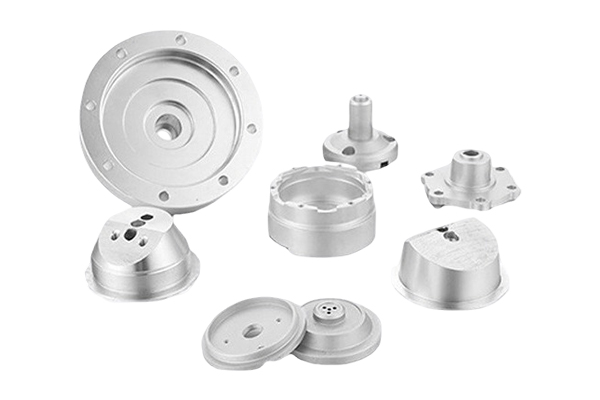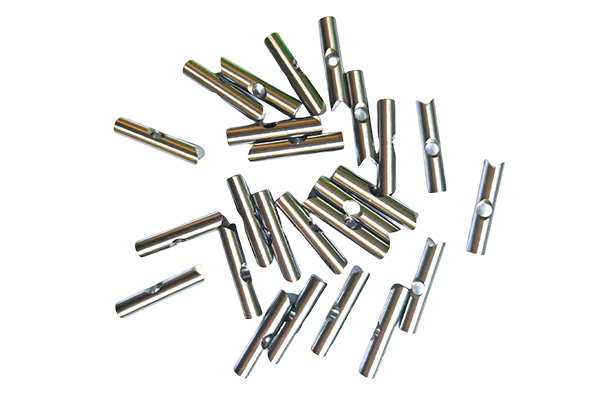How do multi-hole replacement blades ensure accurate hole spacing and burr-free edges in medical device assembly?
Release Time : 2025-08-18
In the medical device assembly process, the machining accuracy of each component is directly related to the safety and reliability of the final product. Multi-hole replacement blades, as key tools used in the manufacture of components such as device housings, brackets, and circuit boards, not only perform basic hole punching tasks but also require exceptional process performance under demanding conditions. In particular, even the slightest deviation in hole spacing and edge quality can impact the device's sealing, assembly consistency, and biocompatibility, necessitating a systematic approach to ensure flawless performance.
Hole spacing accuracy is a core performance indicator of multi-hole replacement blades. Structural components in medical devices often require precise alignment with multiple components, such as sensor modules, circuit boards, or fluid channel interfaces. If hole position deviations exceed the allowable range, assembly difficulties, stress concentration, and even functional failure can occur. To ensure highly consistent hole spacing, the replacement blade itself must be manufactured using precision molds. Its array layout is optimized and simulated using computer-aided engineering software during the design phase to ensure uniform force distribution and accurate positioning. During the manufacturing process, high-precision CNC equipment is used for micron-level machining, ensuring that the positioning error of each blade is kept to an extremely small range. Furthermore, the positioning mechanism of the replacement blade, when installed in the punching mechanism, is precisely designed to prevent loosening or misalignment that could cause hole displacement.
In actual operation, simultaneous punching of multiple holes generates significant transient stress. If the force applied to the replacement blade array is uneven, this can easily cause localized deformation or displacement, affecting the consistency of hole spacing. To this end, the overall structure of the replacement blade has been mechanically optimized, using high-strength alloy materials and heat-treated to enhance rigidity and fatigue resistance. Furthermore, the support structure of the replacement blade array has been meticulously designed to ensure that the force applied to each hole is synchronized at the moment of impact, preventing strain or misalignment caused by "cutting first, then cutting later." This combination of overall rigidity and dynamic balance ensures consistent hole distribution with every punch.
A burr-free edge is another crucial process requirement. Medical devices are often used in sterile environments. Tiny burrs on the edges of metal parts can not only cause injuries to operators and contaminate the environment, but can also become a breeding ground for bacteria, compromising the cleaning and sterilization of the equipment. Furthermore, burrs can easily lead to uneven coating during subsequent spraying or electroplating processes, reducing protective performance. To achieve a smooth cut, the replacement blade edge undergoes multiple grinding and polishing processes, resulting in a sharp and smooth cutting surface. The cutting edge angle is optimized to ensure sufficient cutting force while minimizing material tearing, making the cutting process more like shearing than squeezing.
During the stamping process, the clearance between the upper and lower dies is also crucial. Excessive clearance can easily cause flanging or burrs, while too little can increase tool wear. Therefore, the replacement blade and base die must be precisely matched to ensure a clean cut in the shearing zone. Some high-end applications also utilize micro-lubrication or gas-assisted technology to reduce frictional heat and metal adhesion, further improving edge quality.
Material properties are also crucial. Medical devices often utilize specialized materials such as stainless steel, titanium alloy, and engineering plastics, which are prone to work hardening or brittle fracture during machining. Replacement blades require tailored cutting edge geometry and hardness to suit the material's cutting behavior. For example, for easily hardened materials, using a sharper cutting edge and faster punching speed can reduce plastic deformation and prevent burr formation.
Finally, the stability and maintenance of the entire punching system directly impact processing quality. Regularly replacing worn replacement blades, cleaning the mold surface, and calibrating the positioning mechanism are essential measures to maintain long-term high-precision operation. Automated equipment can also integrate real-time monitoring systems to determine the status of the replacement blade through vibration, sound, or image recognition, providing timely warnings and replacements to prevent tool deterioration from impacting product quality.
In summary, achieving precise hole spacing and burr-free edges in multi-hole punching replacement blades in medical device assembly relies on the synergistic effects of materials science, precision manufacturing, structural design, and system maintenance. More than just a simple cutting tool, a multi-hole replacement blade is a critical component in ensuring high-quality medical product manufacturing, embodying the precision industry's meticulous attention to detail.
Hole spacing accuracy is a core performance indicator of multi-hole replacement blades. Structural components in medical devices often require precise alignment with multiple components, such as sensor modules, circuit boards, or fluid channel interfaces. If hole position deviations exceed the allowable range, assembly difficulties, stress concentration, and even functional failure can occur. To ensure highly consistent hole spacing, the replacement blade itself must be manufactured using precision molds. Its array layout is optimized and simulated using computer-aided engineering software during the design phase to ensure uniform force distribution and accurate positioning. During the manufacturing process, high-precision CNC equipment is used for micron-level machining, ensuring that the positioning error of each blade is kept to an extremely small range. Furthermore, the positioning mechanism of the replacement blade, when installed in the punching mechanism, is precisely designed to prevent loosening or misalignment that could cause hole displacement.
In actual operation, simultaneous punching of multiple holes generates significant transient stress. If the force applied to the replacement blade array is uneven, this can easily cause localized deformation or displacement, affecting the consistency of hole spacing. To this end, the overall structure of the replacement blade has been mechanically optimized, using high-strength alloy materials and heat-treated to enhance rigidity and fatigue resistance. Furthermore, the support structure of the replacement blade array has been meticulously designed to ensure that the force applied to each hole is synchronized at the moment of impact, preventing strain or misalignment caused by "cutting first, then cutting later." This combination of overall rigidity and dynamic balance ensures consistent hole distribution with every punch.
A burr-free edge is another crucial process requirement. Medical devices are often used in sterile environments. Tiny burrs on the edges of metal parts can not only cause injuries to operators and contaminate the environment, but can also become a breeding ground for bacteria, compromising the cleaning and sterilization of the equipment. Furthermore, burrs can easily lead to uneven coating during subsequent spraying or electroplating processes, reducing protective performance. To achieve a smooth cut, the replacement blade edge undergoes multiple grinding and polishing processes, resulting in a sharp and smooth cutting surface. The cutting edge angle is optimized to ensure sufficient cutting force while minimizing material tearing, making the cutting process more like shearing than squeezing.
During the stamping process, the clearance between the upper and lower dies is also crucial. Excessive clearance can easily cause flanging or burrs, while too little can increase tool wear. Therefore, the replacement blade and base die must be precisely matched to ensure a clean cut in the shearing zone. Some high-end applications also utilize micro-lubrication or gas-assisted technology to reduce frictional heat and metal adhesion, further improving edge quality.
Material properties are also crucial. Medical devices often utilize specialized materials such as stainless steel, titanium alloy, and engineering plastics, which are prone to work hardening or brittle fracture during machining. Replacement blades require tailored cutting edge geometry and hardness to suit the material's cutting behavior. For example, for easily hardened materials, using a sharper cutting edge and faster punching speed can reduce plastic deformation and prevent burr formation.
Finally, the stability and maintenance of the entire punching system directly impact processing quality. Regularly replacing worn replacement blades, cleaning the mold surface, and calibrating the positioning mechanism are essential measures to maintain long-term high-precision operation. Automated equipment can also integrate real-time monitoring systems to determine the status of the replacement blade through vibration, sound, or image recognition, providing timely warnings and replacements to prevent tool deterioration from impacting product quality.
In summary, achieving precise hole spacing and burr-free edges in multi-hole punching replacement blades in medical device assembly relies on the synergistic effects of materials science, precision manufacturing, structural design, and system maintenance. More than just a simple cutting tool, a multi-hole replacement blade is a critical component in ensuring high-quality medical product manufacturing, embodying the precision industry's meticulous attention to detail.







